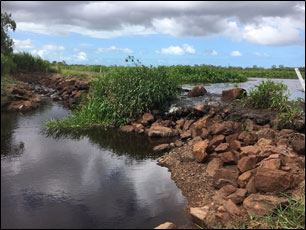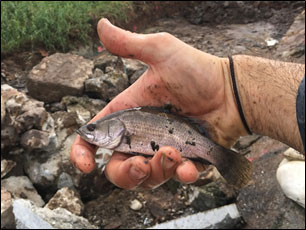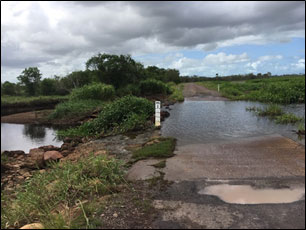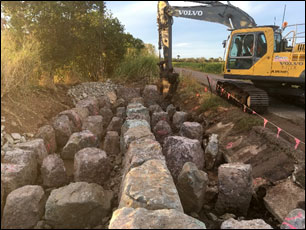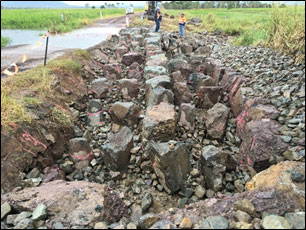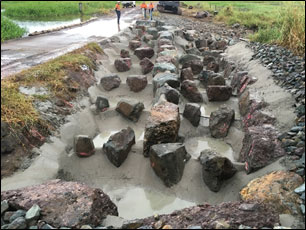Landing Road Rock Ramp Fishway Repair
In June 2019, Catchment Solutions undertook a fish passage improvement project involving the repair of the Landings Road fishway in Koumala, south of Mackay.
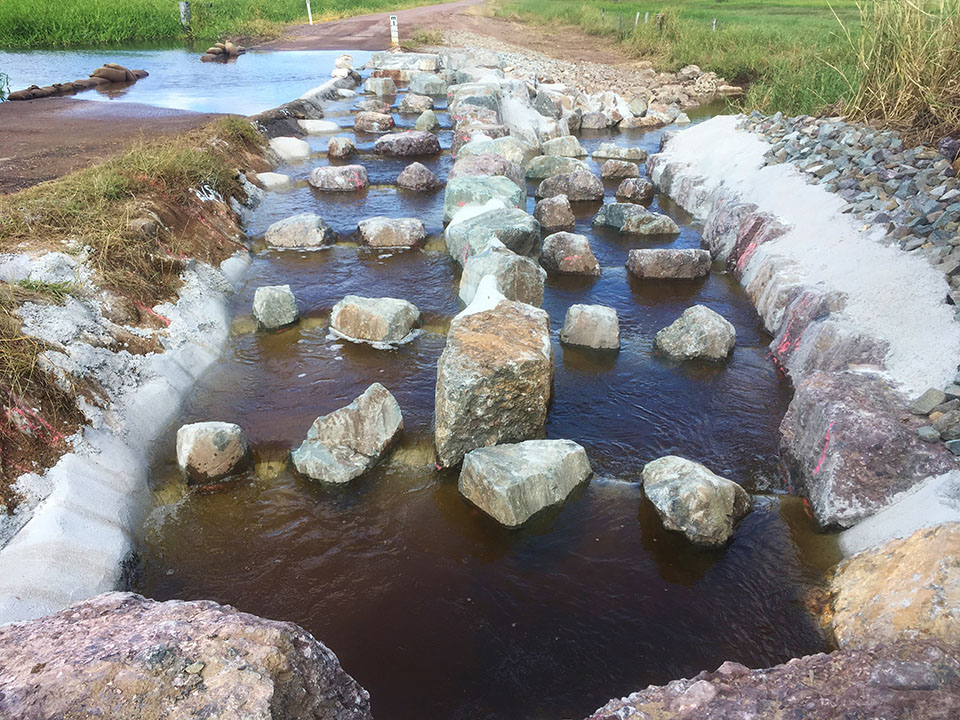
In June 2019, Catchment Solutions undertook a fish passage improvement project involving the repair of the Landings Road fishway which connects the upper estuarine reaches of Rocky Dam Creek (Rocky Dam catchment) to the Tedlands wetlands in Koumala, south of Mackay.
The rock-ramp fishway at the site was showing signs of significantly reduced functionality and was reaching the end of its anticipated design life. Recent advancements in fish passage construction developed through similar projects throughout the region were implemented in the repair of the fishway. Specifically, repairs to the existing fishway incorporated replacing some of the existing ridge and wall rock with larger rock, incorporating deeper resting pools and re-concreting the structure with fibre reinforced concrete for greater longevity, particularly with prolonged exposure to tropical conditions.
Figure 1. Left; Defective fishway (towards left of image) requiring repairs with the barrier height also visible showing 1.2m difference between upstream and downstream water levels. Right; one of 14 juvenile barramundi salvaged during repair works from the pool immediately beneath the fishway. These fish were congregating beneath the fishway, however due to the defects were unable to use the fishway to reach the upstream wetlands. Also trapped below the fishway were giant herring, sea mullet and bullrout.
The barrier at the site is comprised of a 1.2m surface headloss between Tedlands wetland (upstream) and the upper tidal limits of Rocky Dam Creek (downstream), resulting from the Landings Road causeway bisecting and separating the water bodies. Spring tides in the region reach the causeway, delivering a high number of juvenile diadromous fish species of high socioeconomic importance to the site. These species such as barramundi, giant herring, tarpon and sea mullet are required to reach the upstream nursery habitats of the extensive 150ha Tedlands wetland to complete their life-cycle. The rock-ramp provided this access upon its initial construction, however, in recent years has become compromised and defective, hence the requirement for repair works. Fish passage improvement works remediated a number of issues with the fishway through establishing increased depth within the fishway pools. Deeper pools provide essential resting areas for migrating fish by reducing turbulence and velocity. This ensures fish that may become fatigued during their upstream migration have an oppurtunity to rest and recover before utilsing their burst speed to successfully ascend through to the next ridge and eventually reach their upstream nursery wetland habitat.
These fish passage improvement works were co-funded by Mackay Regional Council and Reef Catchments NRM group, and are anticipated to provide significant increases to the biodiversity of this regionally significant wetland complex. Amongst an abundance of birdlife, crocodiles and numerous other fish species, the wetlands provide substantial habitat for young-of-year barramundi recruits. Extremely high numbers of juvenile barramundi migrate into these lowland wetlands during wet-season flows, where they grow rapidly due to the abundance of food and refuge habitat. These fish then migrate back to estuarine habitats as sub-adults to complete their life-cycle. Barramundi are a valuable fisheries resource throughout the region and broader central Queensland, with aquatic connectivity improvements to freshwater and wetland habitats a key strategy in increasing populations of the species for the benefit of commercial, recreational and indigenous fisheries. Due to the high numbers of juvenile barramundi migrating through the fishway and into the wetlands, local residents have nicknamed the fishway the ‘barra ladder’.
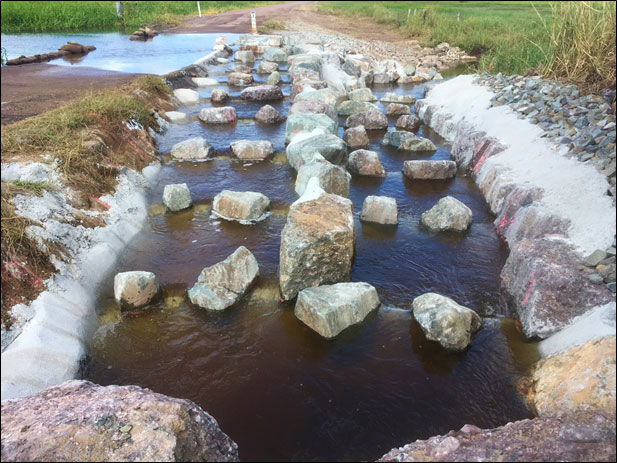
Figure 2. Top row; causeway prior to fishway repair works and wall rock replacing smaller original rock. Middle; fishway upon completion of repairs before (left) and after (right) new concrete being poured to seal the pools and solidify the structure. Bottom; fishway during first flows upon opening up causeway after concrete had set.
